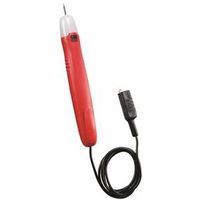Tom,
Nothing you are telling us from an electrical perspective makes sense. At this point I would totally eliminate the ignition switch and connect the wires one at a time to the yellow wire that has 12V. Here's what you should see.
Yellow to Red-Green (IGN term)-Voltage at + side of coil
Yellow to Black-Green (IGN term)-Oil and Gen will light
Yellow to Black-Green (ACC term)-Fuel gauge should move
Yellow to Orange-Yellow (ACC term)-Turn signals should work
Yellow to Black (ACC term)-Heater blower should work
Yellow to Red-Blue (S term)-Motor should turn over
If all these tests are positive then there can only be two possibilities. Either the ignition switch is defective or you are connecting the wires to the wrong terminals. Hope this helps.
John
Nothing you are telling us from an electrical perspective makes sense. At this point I would totally eliminate the ignition switch and connect the wires one at a time to the yellow wire that has 12V. Here's what you should see.
Yellow to Red-Green (IGN term)-Voltage at + side of coil
Yellow to Black-Green (IGN term)-Oil and Gen will light
Yellow to Black-Green (ACC term)-Fuel gauge should move
Yellow to Orange-Yellow (ACC term)-Turn signals should work
Yellow to Black (ACC term)-Heater blower should work
Yellow to Red-Blue (S term)-Motor should turn over
If all these tests are positive then there can only be two possibilities. Either the ignition switch is defective or you are connecting the wires to the wrong terminals. Hope this helps.
John




 This one is simply a flashlight bulb, two penlight batteries (in a plastic case), a wire and alligator clip. Nothing works better. If the tested connections have resistance, the bulb shines dim, so you can see how well current flows. If you happen to test a live circuit, the bulb will blow but you won't get shocked.
This one is simply a flashlight bulb, two penlight batteries (in a plastic case), a wire and alligator clip. Nothing works better. If the tested connections have resistance, the bulb shines dim, so you can see how well current flows. If you happen to test a live circuit, the bulb will blow but you won't get shocked.
Comment